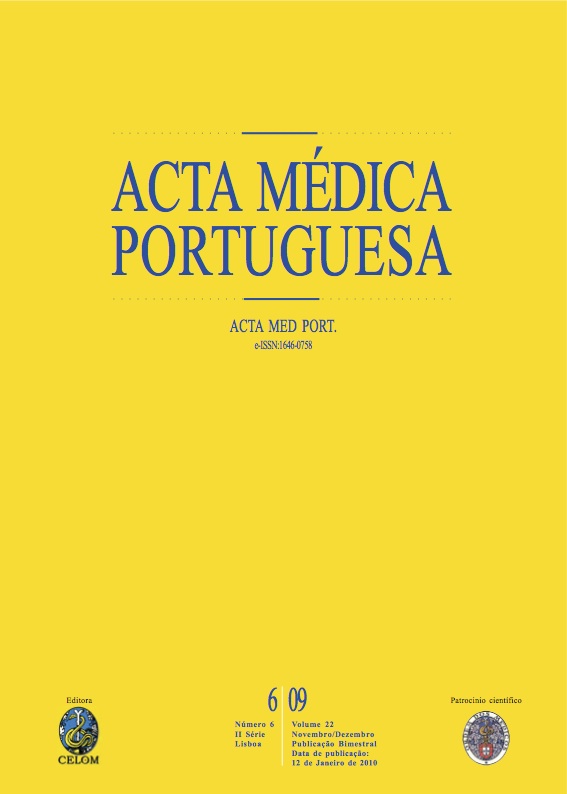Co-morbidity and functionality: observational study of a cohort of patients.
DOI:
https://doi.org/10.20344/amp.1732Abstract
Hypertension, Diabetes Mellitus, Cardiac Ischemic Disease and Asthma are chronic diseases that often coexist. Studies on consequences of co-morbidity conclude that the competition of illnesses can be associated with physical and social disability and a higher request of Health services. This study intends to describe the alterations in co-morbidity of a cohort of sick people between 2003 and 2007, to relate it with functionality and to characterise their impact on health resources. The study is observational. A random sample of 110 sick people, stratified by age and gender, was obtained from the database COMORB4DC. Variables were studied on specific domains: demographic, social, morbid-mortality, health resources and functionality. Health problems are classified according to ICPC2. The test of marginal homogeneity, the test of the signals, the test of Mann-Whitney and the test of Kruskal-Wallis were used for statistically analysis. The majority of the sample has 65 or more years. The most frequent comorbidities between the four chronic index diseases, in the years of 2003 and 2007, are hypertension with diabetes and the hypertension with ischemic cardiac disease. In the set of the locomotion tasks, physical and instrumental autonomy, only 8% of the sick people are totally independent and 47% are autonomous, these mainly had to use ways of support. Between 2003 and 2007, it is verified a difference (p < 0.001) in the average of identified health problems and in the number of problems grouped in classes. The dependence in locomotion is only associated with a superior number of illnesses (p = 0.033), of used resources of health (p = 0.005) and prescribed drugs (p = 0.001). It is verified to exist a correlation among the number of chronic diseases and the number of contacts with the health centre (r = 0.434, p < 0.001). The collected data on co-morbidity, functionality, resource to social assistance activities and medication allow us to better know the complex network of co-morbidity. This can help us make earlier diagnosis, more accurate prognosis and creating health quality and management plans. The repetition of the study with another interval of time can give us more knowledge on this net of relations. It is essential to effectively provide population with specific health resources and to link primary, secondary and tertiary care.Downloads
Downloads
How to Cite
Issue
Section
License
All the articles published in the AMP are open access and comply with the requirements of funding agencies or academic institutions. The AMP is governed by the terms of the Creative Commons ‘Attribution – Non-Commercial Use - (CC-BY-NC)’ license, regarding the use by third parties.
It is the author’s responsibility to obtain approval for the reproduction of figures, tables, etc. from other publications.
Upon acceptance of an article for publication, the authors will be asked to complete the ICMJE “Copyright Liability and Copyright Sharing Statement “(http://www.actamedicaportuguesa.com/info/AMP-NormasPublicacao.pdf) and the “Declaration of Potential Conflicts of Interest” (http:// www.icmje.org/conflicts-of-interest). An e-mail will be sent to the corresponding author to acknowledge receipt of the manuscript.
After publication, the authors are authorised to make their articles available in repositories of their institutions of origin, as long as they always mention where they were published and according to the Creative Commons license.









